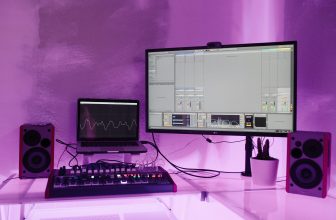
Introduction
In today’s fast-paced digital world, content creation and digital marketing have become increasingly visual and interactive. With consumers preferring engaging and informative content, businesses and creators are leveraging screen recording to enhance their marketing efforts. Screen recording tools allow users to capture real-time activities on their devices, making them a valuable asset for marketers, educators, influencers, and businesses alike.
This blog explores the growing role of screen recording in digital marketing and content creation, highlighting its benefits, applications, and best practices.
What is Screen Recording?
Screen recording is the process of capturing digital activities displayed on a computer or mobile screen. It can include voiceovers, annotations, and even webcam footage, making it an effective way to convey information, tutorials, demonstrations, and presentations. Popular screen recording tools include Camtasia, OBS Studio, Loom, and Snagit, among others.
Benefits of Screen Recording in Digital Marketing and Content Creation
1. Enhances Engagement
Videos are more engaging than plain text or static images. Screen recordings allow marketers to present their content in an interactive and visually appealing manner, increasing audience retention and engagement rates.
2. Simplifies Complex Information
Many digital products and services require explanations that are too complicated for text-based content. Screen recording allows brands to visually demonstrate product features, software tutorials, and step-by-step guides in a way that is easy to understand.
3. Builds Trust and Credibility
Authentic and transparent communication is key to digital marketing success. Screen recordings, particularly those featuring a live demonstration, help build trust by offering real-time insights into how a product or service works.
4. Cost-Effective Marketing Strategy
Producing high-quality screen recordings is significantly more affordable compared to traditional video production. With the right screen recording software, businesses can create professional-looking content without requiring expensive equipment or a video production team.
5. Boosts Conversion Rates
Studies show that video content drives higher conversion rates. Screen-recorded explainer videos, walkthroughs, and testimonials can convince potential customers to make a purchase or subscribe to a service by providing clear and informative content.
Applications of Screen Recording in Digital Marketing and Content Creation
1. Product Demos and Tutorials
Companies use screen recordings to showcase product features, functionalities, and troubleshooting processes. These videos help potential customers make informed decisions and reduce the need for extensive customer support.
2. Social Media Marketing
Screen recordings can be repurposed for social media platforms like Instagram, Facebook, LinkedIn, and Twitter. Short and engaging screen-recorded clips can be used to share tips, tricks, or updates about products and services.
3. Webinars and Online Courses
Educational content creators use screen recordings to produce high-quality tutorials and online courses. Webinars with recorded screen-sharing presentations allow businesses to reach a wider audience and provide valuable insights.
4. Content Repurposing
A single screen recording can be repurposed into multiple content formats, including blog posts, social media clips, infographics, and email campaigns. This maximizes content reach and effectiveness.
5. Customer Support and Training
Screen recordings are valuable in customer support by offering step-by-step solutions to common issues. Companies also use them for internal training to educate employees on new software, workflows, and policies.
Best Practices for Using Screen Recording in Digital Marketing
1. Use High-Quality Screen Recording Software
Invest in reliable screen recording software that offers features like HD recording, editing capabilities, annotations, and voiceovers to ensure a professional-quality output.
2. Plan Your Content in Advance
Outline your script or key points before recording to ensure clarity and conciseness. A well-structured screen recording keeps the audience engaged and delivers the intended message effectively.
3. Keep It Short and Engaging
Attention spans are short, so it’s crucial to keep videos concise. Avoid unnecessary details and focus on delivering key information within a reasonable time frame.
4. Optimize for Different Platforms
Each digital platform has its own video format and length requirements. Optimize your screen recordings accordingly to ensure they perform well across various channels.
5. Add Captions and Subtitles
Many users watch videos without sound. Adding captions or subtitles enhances accessibility and ensures that your message is understood by a wider audience.
6. Include a Call-to-Action (CTA)
Encourage viewers to take the next step by adding a compelling call-to-action, such as subscribing, visiting a website, or making a purchase.
Conclusion
Screen recording has become an indispensable tool in digital marketing and content creation. Whether it’s for product demos, social media engagement, educational content, or customer support, screen recordings offer a versatile and cost-effective way to communicate complex information in a visually engaging manner.
By leveraging screen recording strategically, businesses and content creators can enhance engagement, build trust, and ultimately drive conversions. With the right approach and best practices, screen recording can be a game-changer in the digital marketing landscape.









